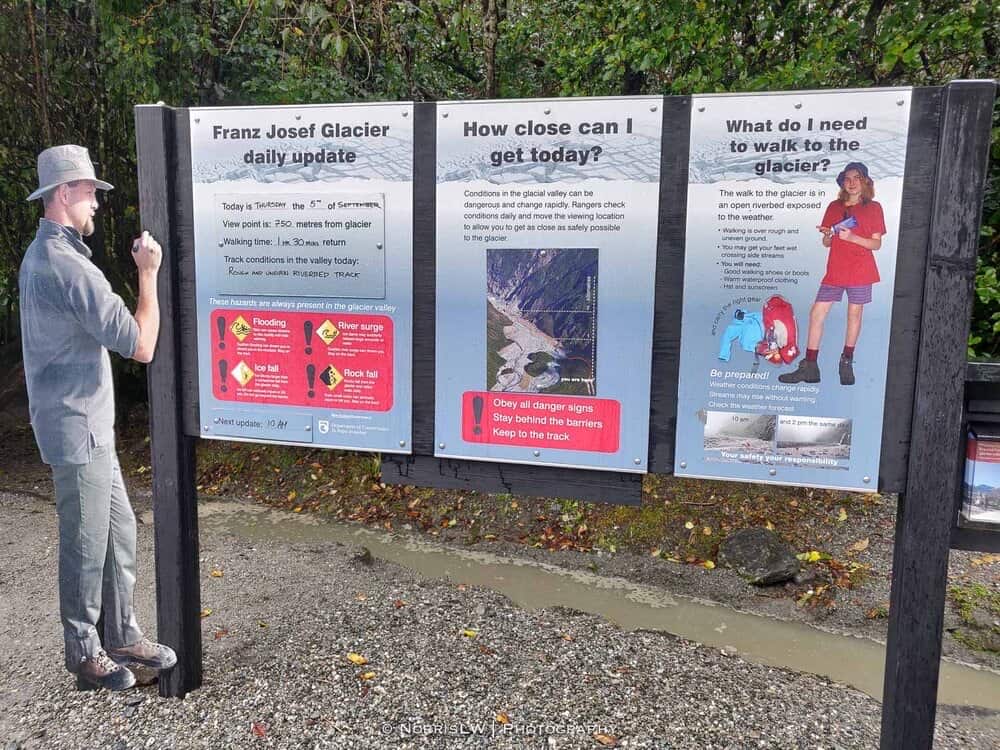By Aviva Cui
How effective is current natural hazard communication? Do tourists understand it and are they prepared for natural hazards before travelling to a destination? The answer is complicated and depends on who you ask.
Based on a case study from the West Coast, South Island of New Zealand, tourism providers would say no, but Chinese international tourists would say yes.
The West Coast was chosen as the destination due to its proximity to several natural hazards and popularity with international tourists. International Chinese visitors were chosen as the study subjects because of their different cultural background and because they were the second largest international tourism market on the West Coast (after Australia) before COVID-19 pandemic.
The study found that international Chinese tourists perceived themselves as having a high awareness and preparedness for natural hazards. However, the data suggests that their high self-perceptions are incorrect when asked specific questions relating to their actual preparedness (e.g. having first aid kits and their awareness of emergency routes). This indicates the tourists have a low level of hazard preparedness and limited hazard awareness. Local informants’ perceptions of their preparedness agreed with this assessment and emphasised their low hazard awareness. However, Chinese tourists’ awareness and perception of natural hazards increased 30%-50% from pre-departure to during their time on the West Coast, indicating that their perceptions of New Zealand and the West Coast region regarding natural hazards changed after arriving in the country.
All local tourism service providers reported there were extensive pre-trip and on-trip communications related to natural hazards given to international Chinese tourists. However, the discrepancy between Chinese tourists on trip and pre-trip awareness and perceptions of natural hazards indicates communication gaps between international Chinese tourists and the New Zealand tourism service providers.
A thematic analysis of local informants’ interviews was performed to better understand and further identify these communication gaps. Possible factors contributing to communications gaps were that international Chinese visitors use different social media platforms to seek advice than New Zealanders and most other international tourists. Also, Chinese tourists are primarily from urbanised environments and are used to different management systems in conservation areas. Furthermore, personal, social and cultural differences may affect Chinese tourists’ perception of risk. A few communication gaps between the tourism and disaster emergency sector and different levels of tourism stakeholders were also identified.
The need for better communication
Natural hazard events have significantly affected society throughout human history and are likely to continue in the future. International visitors are vulnerable as they are unfamiliar with the local language and evacuation routes and can have trouble preparing for natural hazard events. New Zealand is a natural hazard-prone destination, as shown by the recent 2019 Whakaari / White Island eruption, which resulted in 23 deaths and 25 people suffering severe injuries; these were primarily sustained by international visitors.
Consequently, many different stakeholders, such as government agencies, regional councils and local businesses, have developed pre-trip and on-trip natural hazard communication messages for visitors, particularly in conservation areas. More recently, researchers and policymakers have suggested that increasing visitors’ awareness of natural hazards will lead to greater natural hazard preparation before and during their trip.
With international borders reopened to international tourists in many countries, including New Zealand, destinations need to provide better pre-trip communication and education to international visitors, especially those from different cultural backgrounds. They need more information about natural hazards, weather conditions in conservation areas, and more conservation knowledge combined with a better understanding of the local natural hazard management systems.
The responsibility for better on-trip communication must be done by all stakeholders in the tourism industry. All pre-departure communication needs to use channels and methods that are appropriate and can be received by international visitors, such as delivering education on flights to the destination.
Aviva Cui recently completed her Masters research at Lincoln University, supervised by Associate Professors Joanna Fountain and Stephen Espiner. Her thesis was part-funded by the Resilience to Nature’s Challenge Rural programme.




